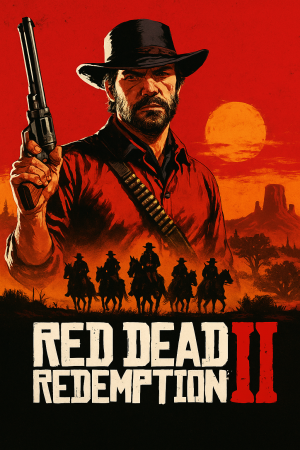In a world obsessed with instant gratification, few games dare to slow you down. Red Dead Redemption 2 does exactly that — and it’s brilliant for it. While modern games chase faster mechanics, shorter missions, and endless online updates, Rockstar’s masterpiece forces players to breathe, observe, and feel.
Many gamers bounced off its deliberate pacing at first. But those who stayed discovered something remarkable: the slower it gets, the deeper it pulls you in.
The Beauty of Taking Your Time
At first glance, RDR2’s pacing feels glacial. Skinning animals takes several seconds. Arthur mounts his horse with cinematic patience. Even looting feels like an art form. But this isn’t poor design — it’s deliberate storytelling.
Rockstar didn’t just want to build a game; they wanted to build immersion. Every second of slowness is there to make you exist in this world. You feel the mud under Arthur’s boots, the chill of a mountain morning, the weight of your gun after a long day.
This attention to tempo is why so many players still find themselves returning years later—often through digital stores like Eneba — to relive that rare feeling of authenticity.
Pacing as Emotional Storytelling
RDR2’s story isn’t just about gunslingers and outlaws — it’s about decline, decay, and the slow death of an era. The deliberate pacing mirrors Arthur Morgan’s own emotional exhaustion.
The Game’s Slow Burn Serves a Purpose:
- Reflection over reaction. Every mission gives you time to think, to feel, and to care about what happens next.
- World-building through silence. Long rides between towns aren’t filler—they’re character development in disguise.
- Realism as resistance. By refusing to rush, the game rebels against the speed-driven nature of modern entertainment.
When Arthur stops to help a stranger, or pauses to watch the sunset, it’s not just downtime — it’s texture. The world breathes in real time, and that makes every emotional beat hit harder.
A Game About Living, Not Winning
Unlike many open-world titles that throw constant objectives at you, Red Dead Redemption 2 rewards slowness with discovery. Spend time hunting, fishing, or simply talking to camp members, and you’ll find hidden dialogue, unique interactions, and moments of quiet humanity.
The game doesn’t demand efficiency — it celebrates inefficiency. It’s not about how fast you reach the credits; it’s about who you become along the way.
What Makes the Slow Pace Work:
- Immersive realism. Every mechanic has weight, from cleaning your horse to cooking dinner.
- Natural storytelling. The world doesn’t rush to entertain you — you uncover stories at your own rhythm.
- Emotional payoff. By the time the story reaches its finale, every minute you spent lingering adds to the heartbreak.
It’s a rare reminder that video games don’t have to mimic the chaos of real life—they can soothe it.
The Paradox of Patience
What’s truly fascinating is that the game’s slow pace actually enhances its replayability. On a second or third playthrough, players notice details they completely missed before — Arthur’s subtle facial animations, hidden wildlife behaviours, or even camp conversations that shift with your moral choices.
By encouraging you to slow down, RDR2 rewards curiosity with richness. It’s not about instant rewards but delayed satisfaction, something most modern games have forgotten how to deliver.
And ironically, that very slowness makes it feel timeless. Years after its release, the game still stands tall among faster, flashier titles.
A Lesson in Stillness
Red Dead Redemption 2 proves that pacing isn’t a weakness — it’s intent. In a landscape filled with dopamine-chasing shooters and speedrun culture, Rockstar gave us something radical: stillness.
It’s not just a cowboy simulator — it’s a meditation on time, morality, and the beauty of simply existing.
So the next time you mount your horse and ride through the fog at dawn, remember: it’s okay to take it slow. That’s where the magic happens.
And if you’re ready to rediscover the world of Arthur Morgan, Eneba digital marketplace makes it easier than ever to revisit the wild west on your own terms — no rush required.


